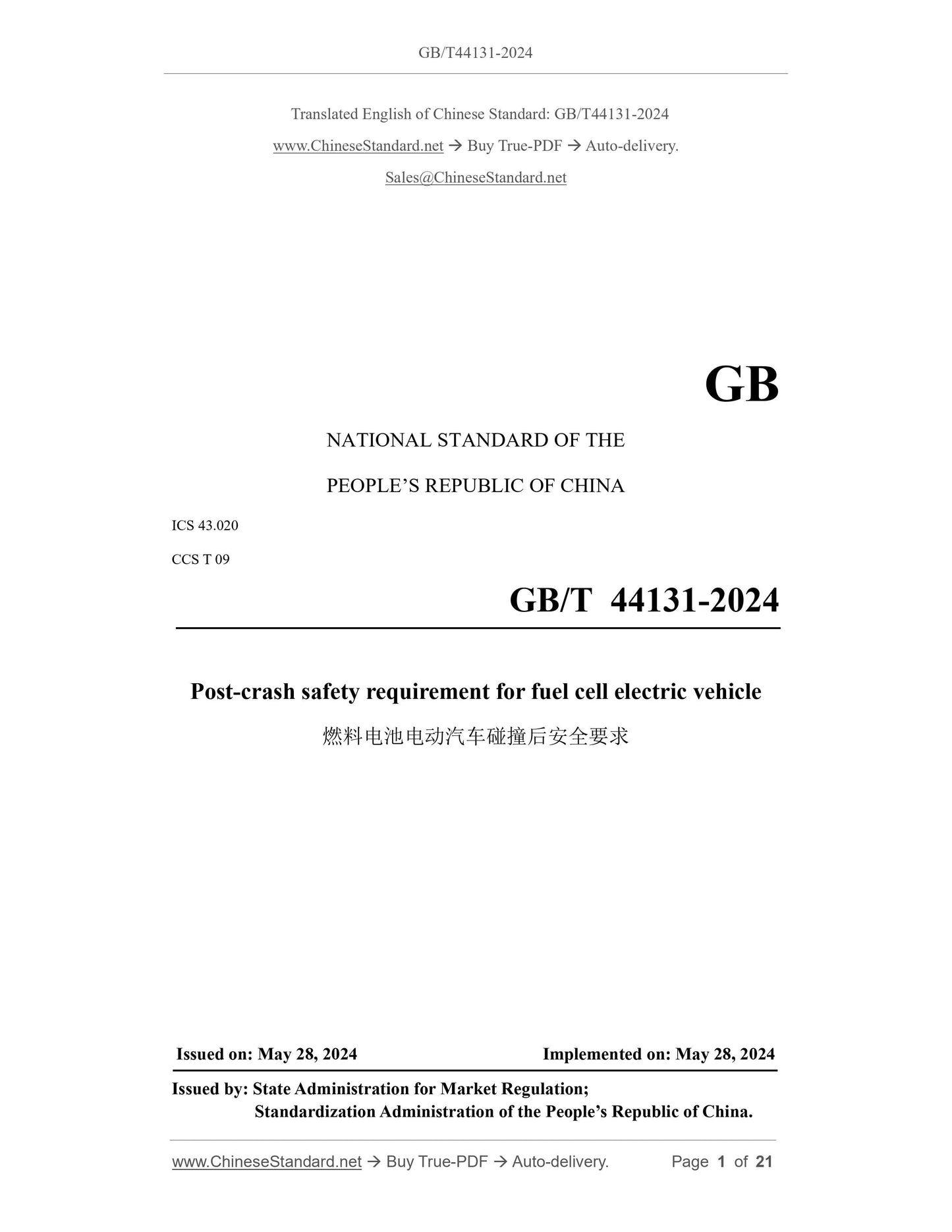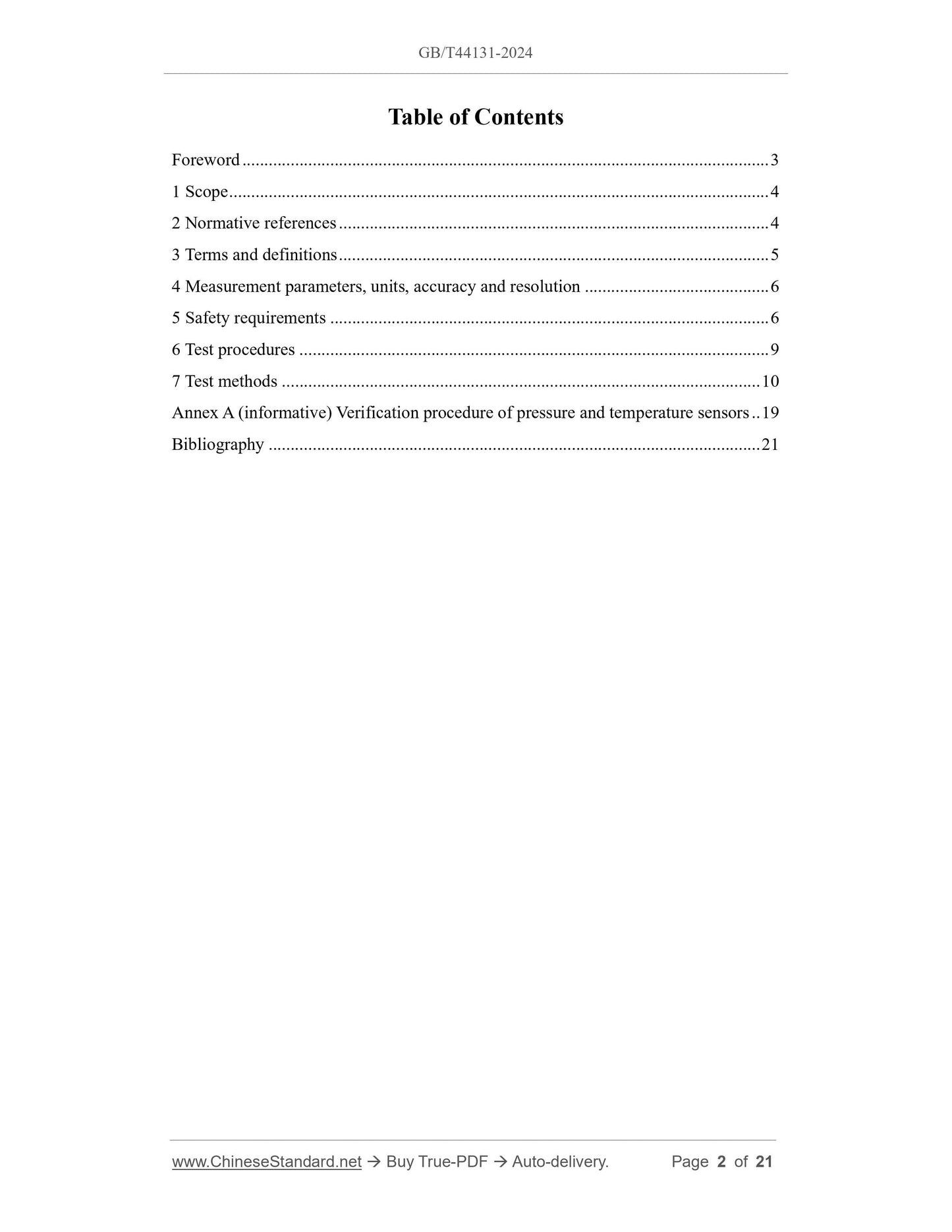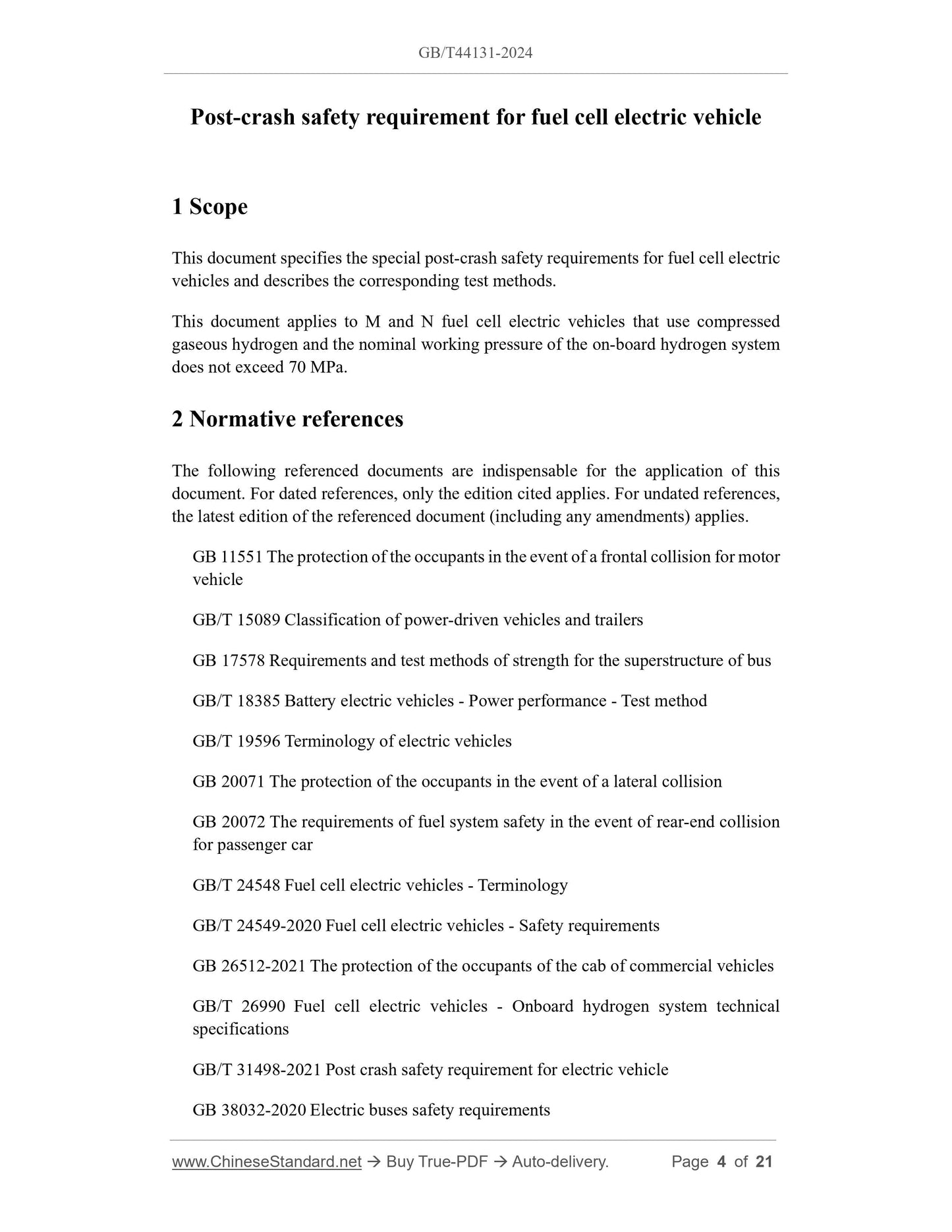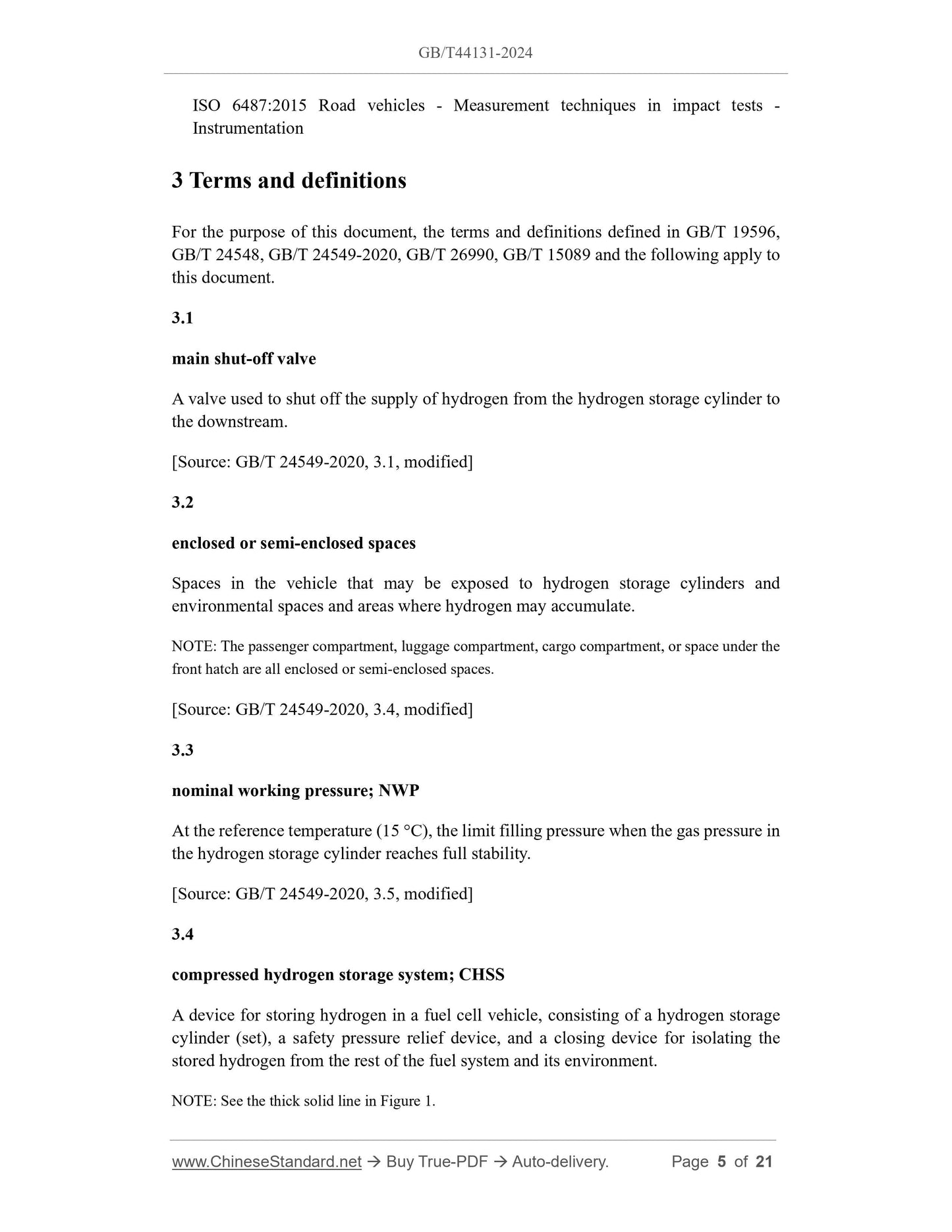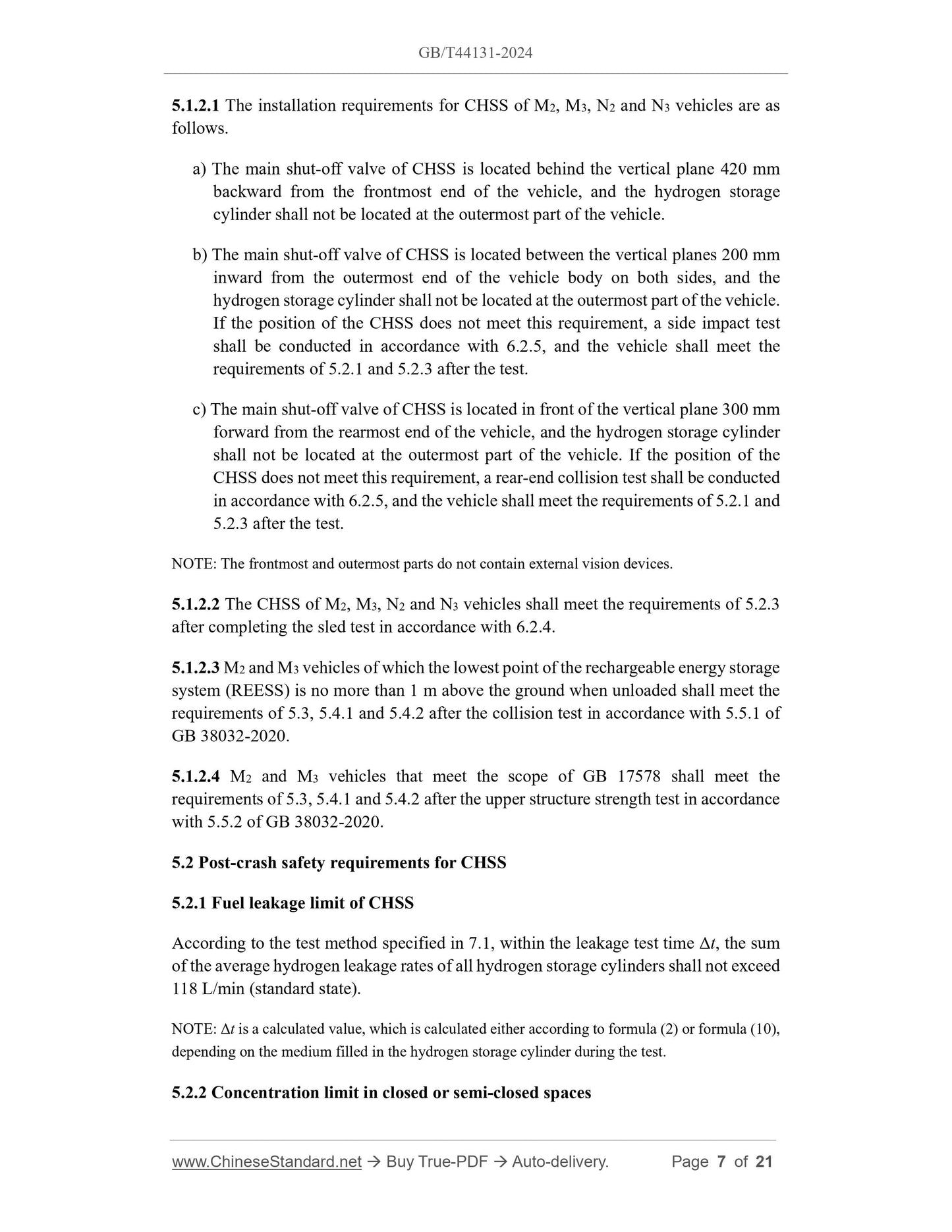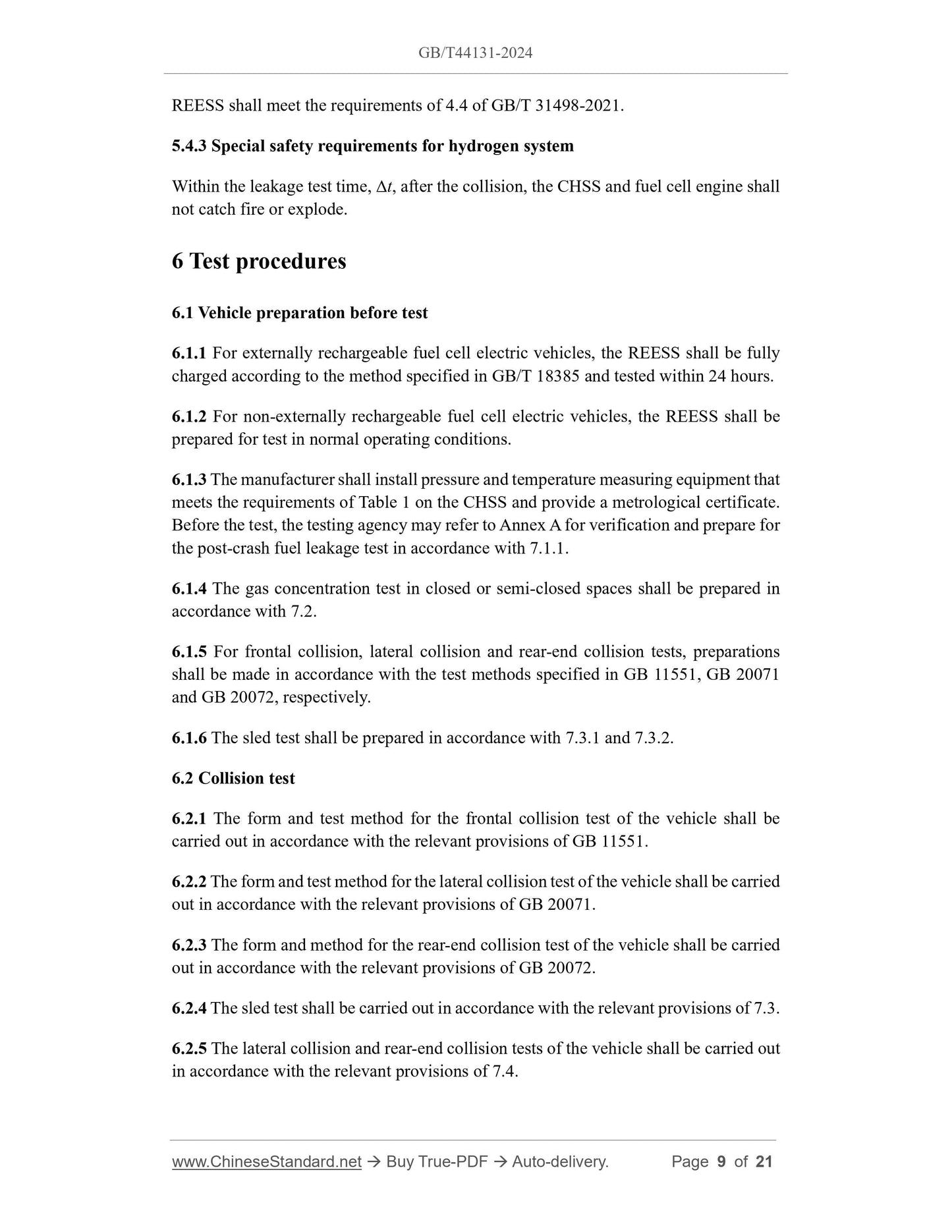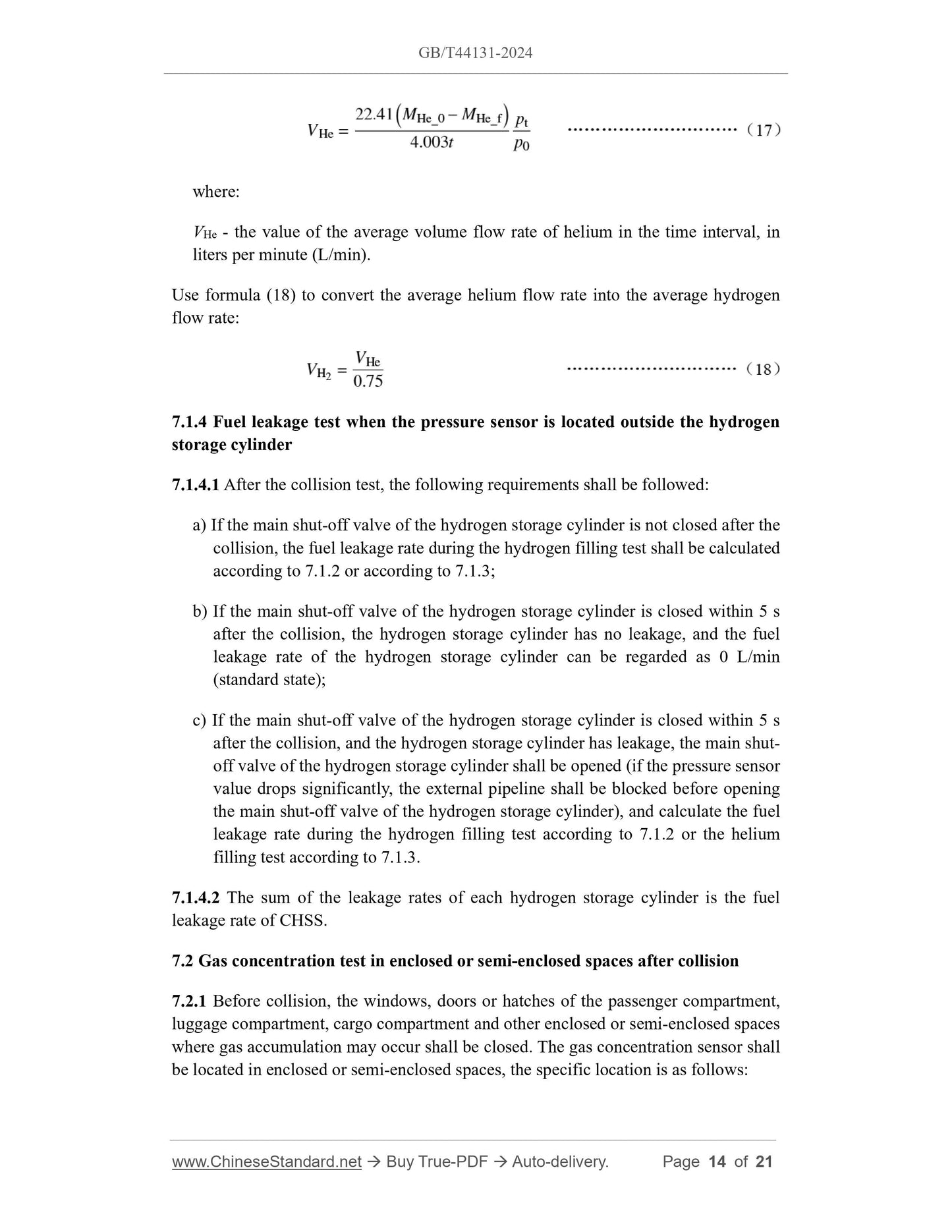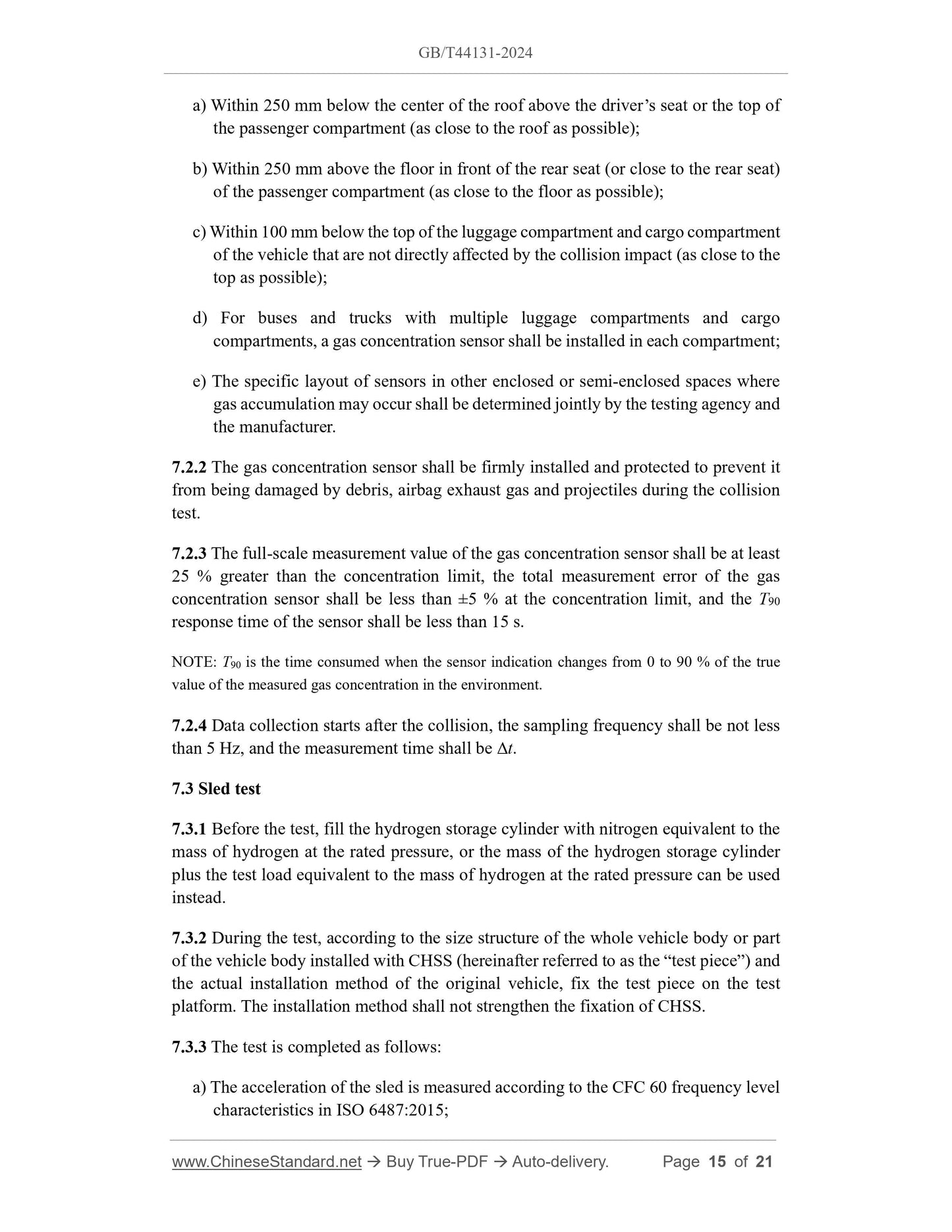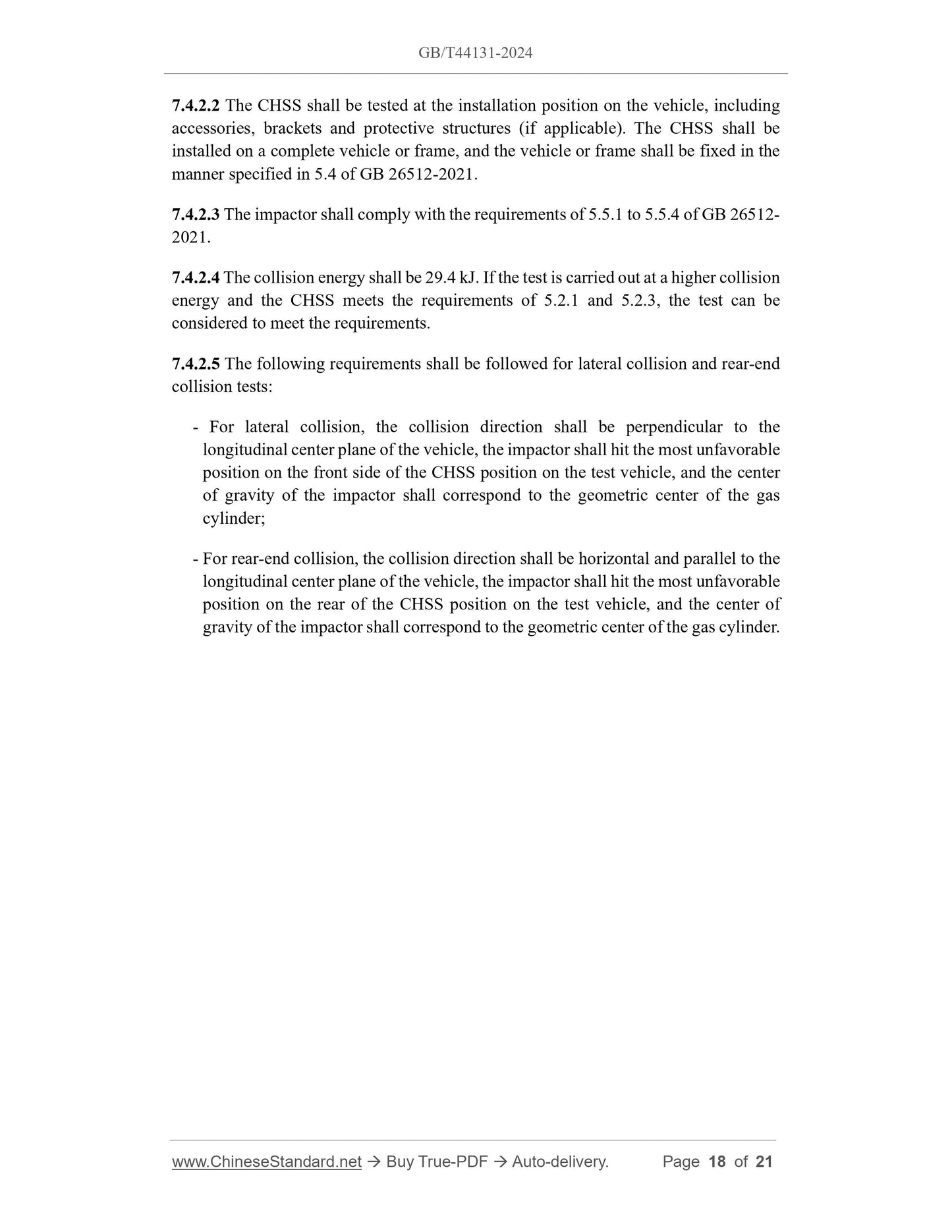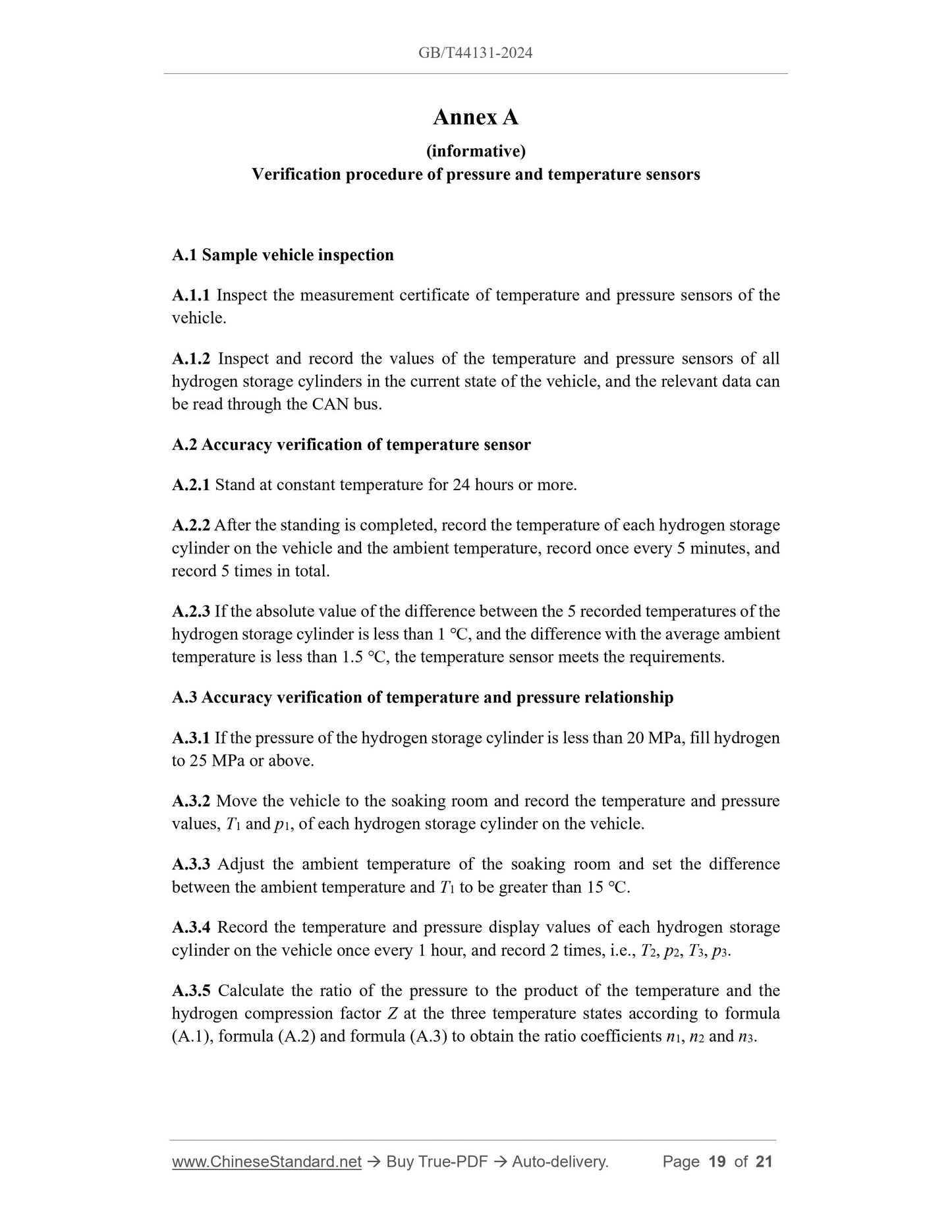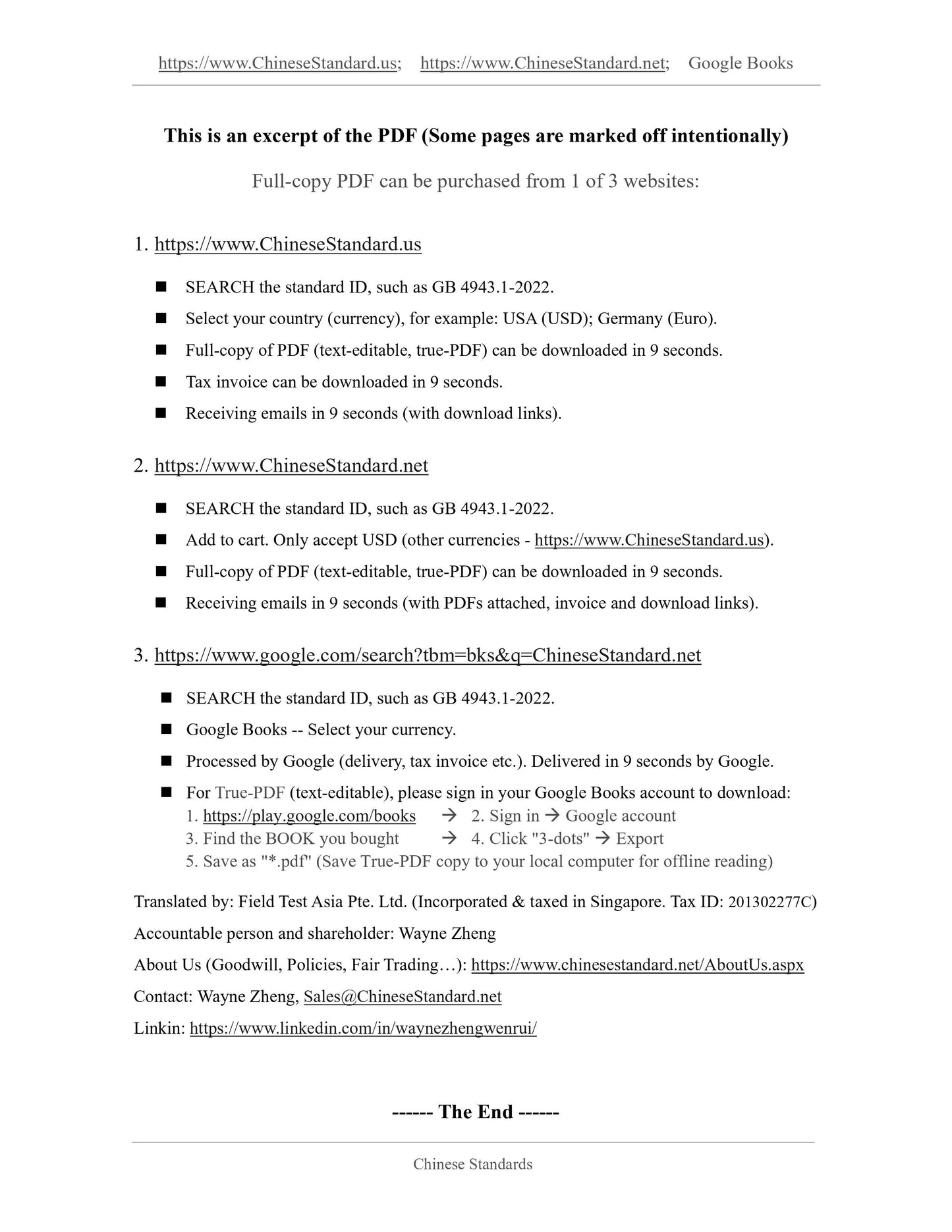1
/
of
11
www.ChineseStandard.us -- Field Test Asia Pte. Ltd.
GB/T 44131-2024 English PDF (GB/T44131-2024)
GB/T 44131-2024 English PDF (GB/T44131-2024)
Regular price
$275.00
Regular price
Sale price
$275.00
Unit price
/
per
Shipping calculated at checkout.
Couldn't load pickup availability
GB/T 44131-2024: Post-crash safety requirement for fuel cell electric vehicle
Delivery: 9 seconds. Download (and Email) true-PDF + Invoice.Get Quotation: Click GB/T 44131-2024 (Self-service in 1-minute)
Newer / historical versions: GB/T 44131-2024
Preview True-PDF
Scope
This document specifies the special post-crash safety requirements for fuel cell electricvehicles and describes the corresponding test methods.
This document applies to M and N fuel cell electric vehicles that use compressed
gaseous hydrogen and the nominal working pressure of the on-board hydrogen system
does not exceed 70 MPa.
Basic Data
| Standard ID | GB/T 44131-2024 (GB/T44131-2024) |
| Description (Translated English) | Post-crash safety requirement for fuel cell electric vehicle |
| Sector / Industry | National Standard (Recommended) |
| Classification of Chinese Standard | T09 |
| Word Count Estimation | 18,128 |
| Date of Issue | 2024-05-28 |
| Date of Implementation | 2024-05-28 |
| Issuing agency(ies) | State Administration for Market Regulation, China National Standardization Administration |
Share
